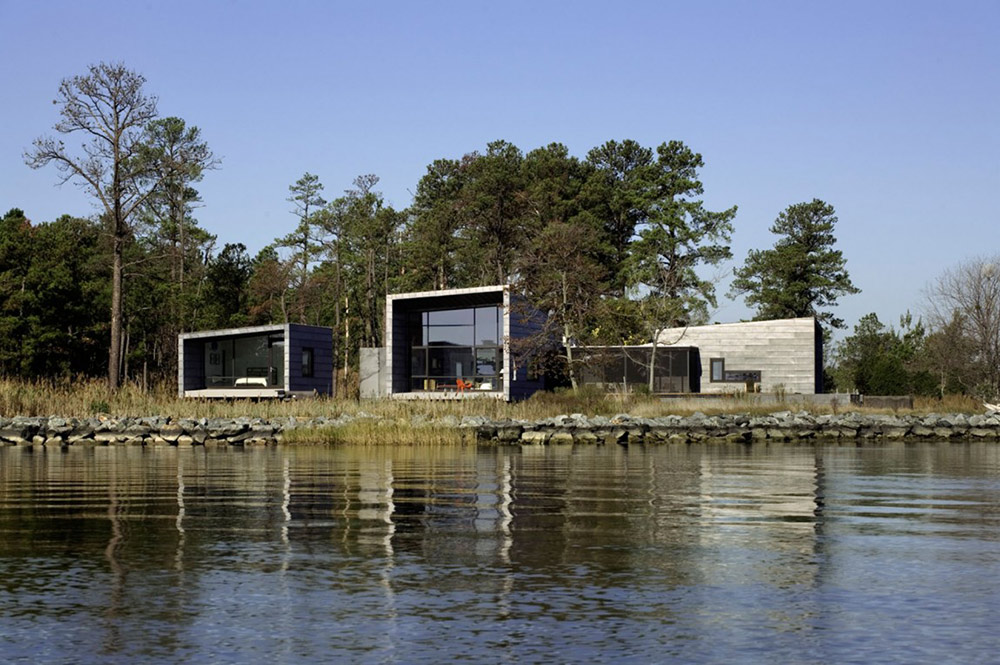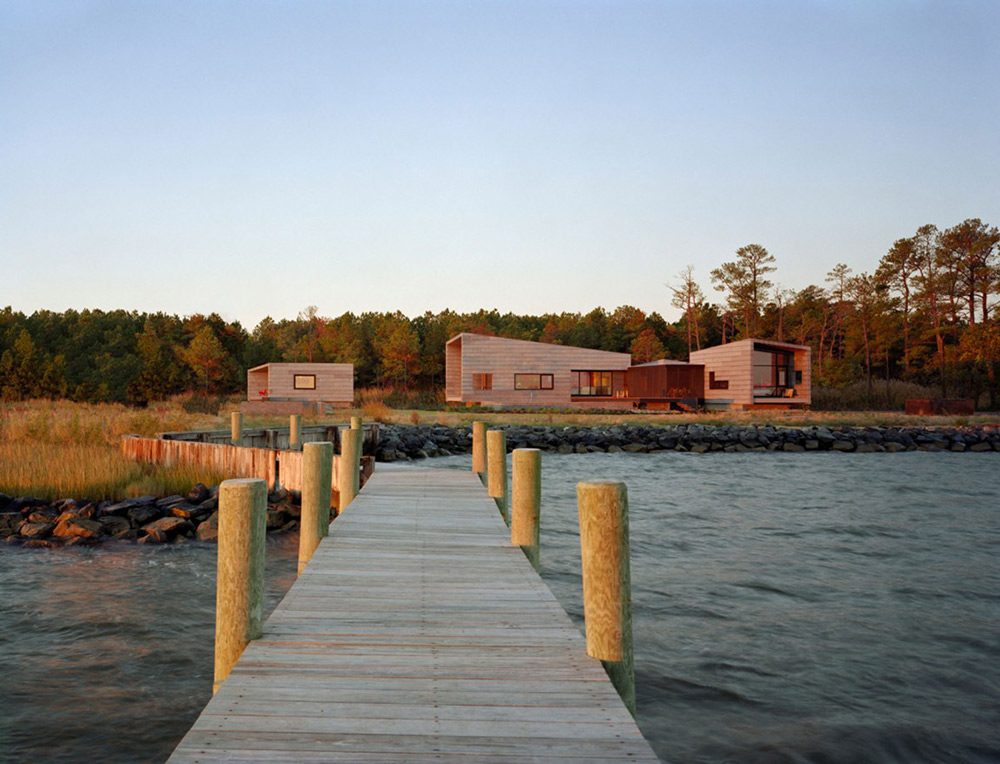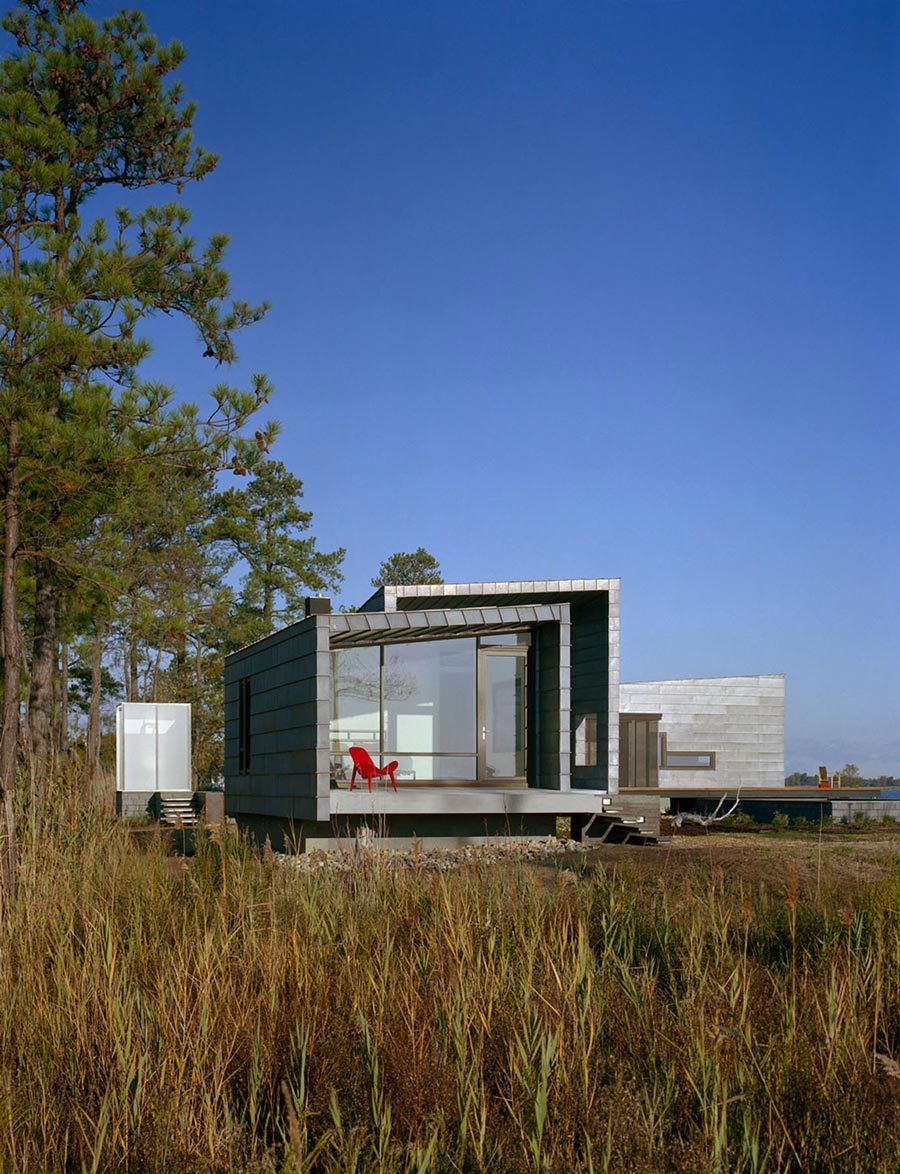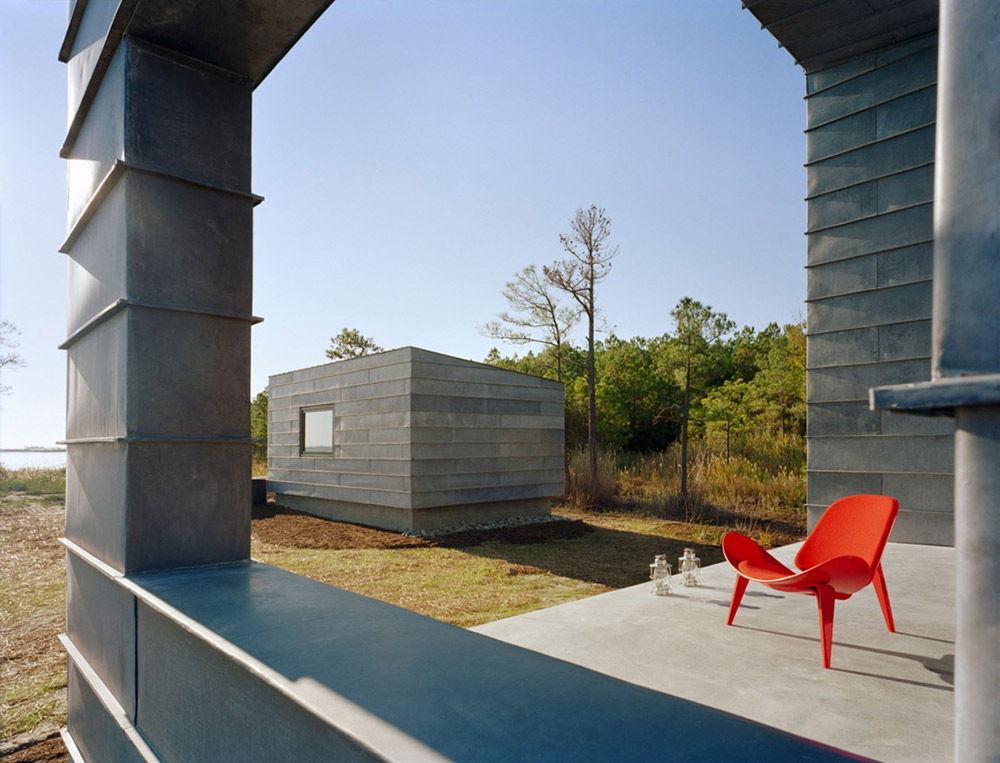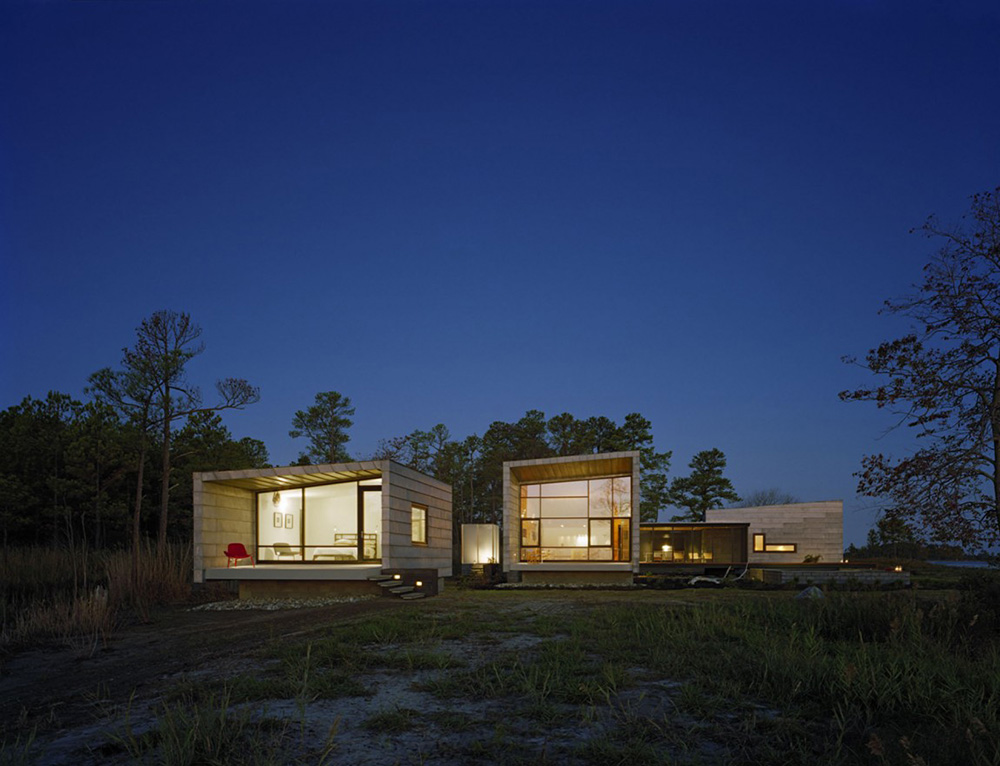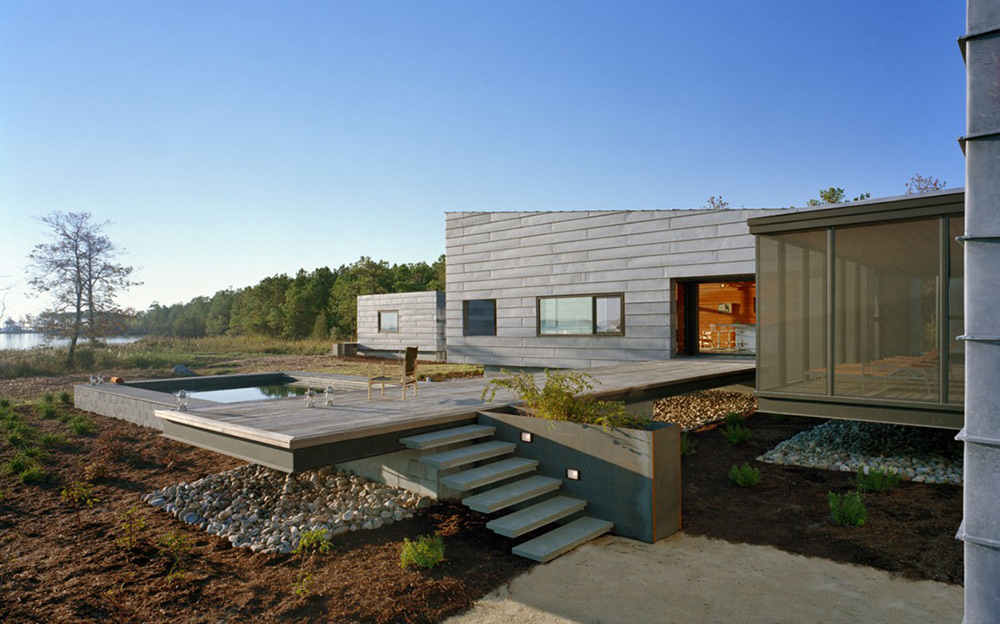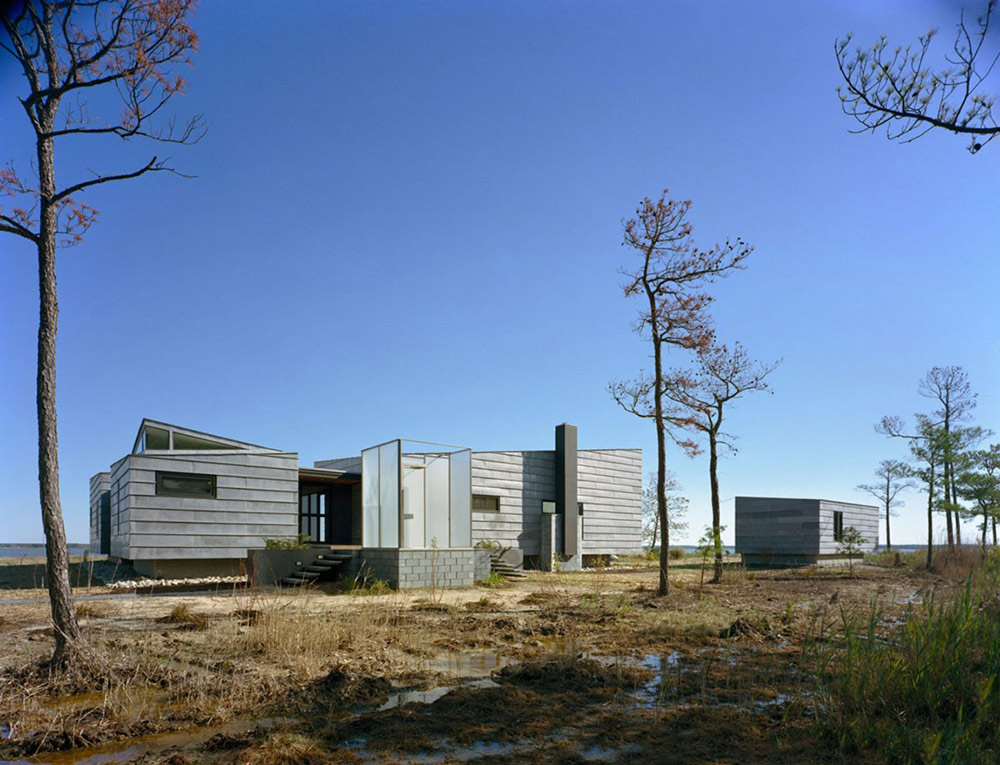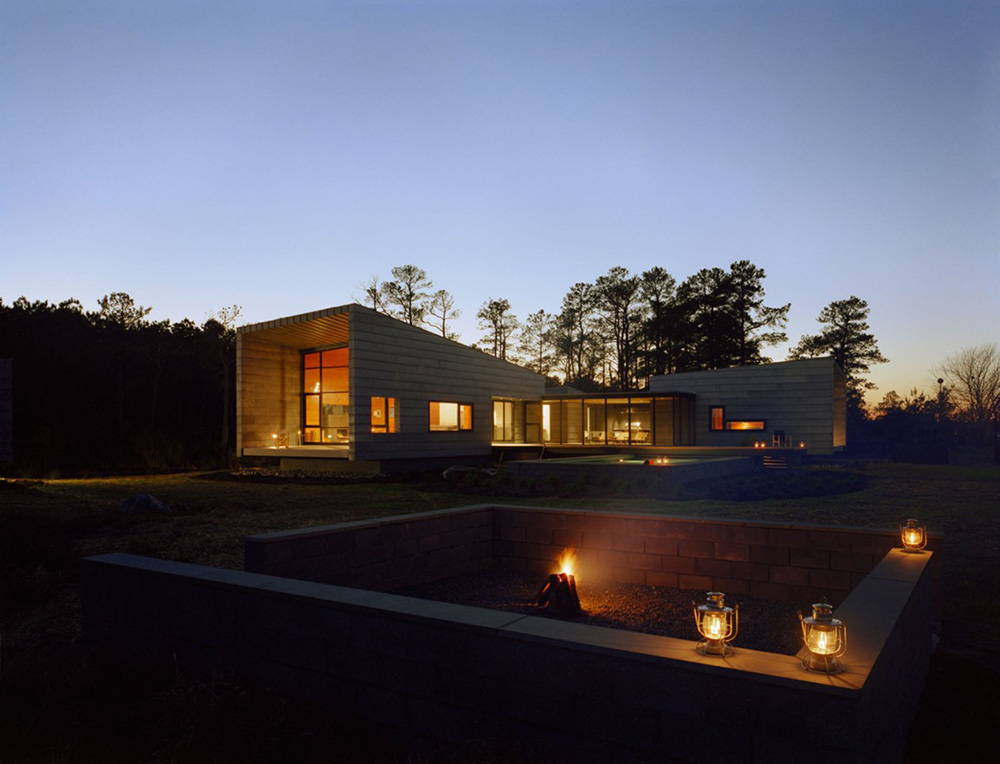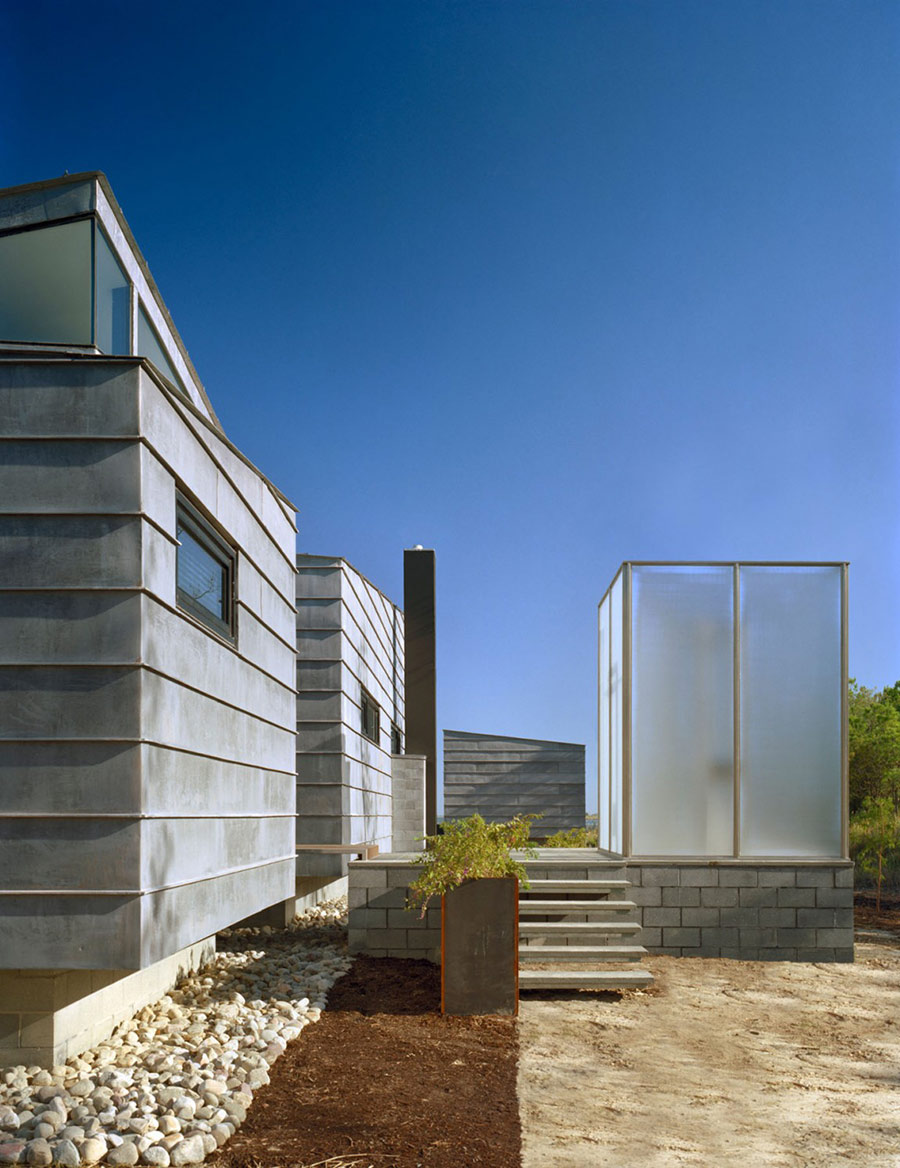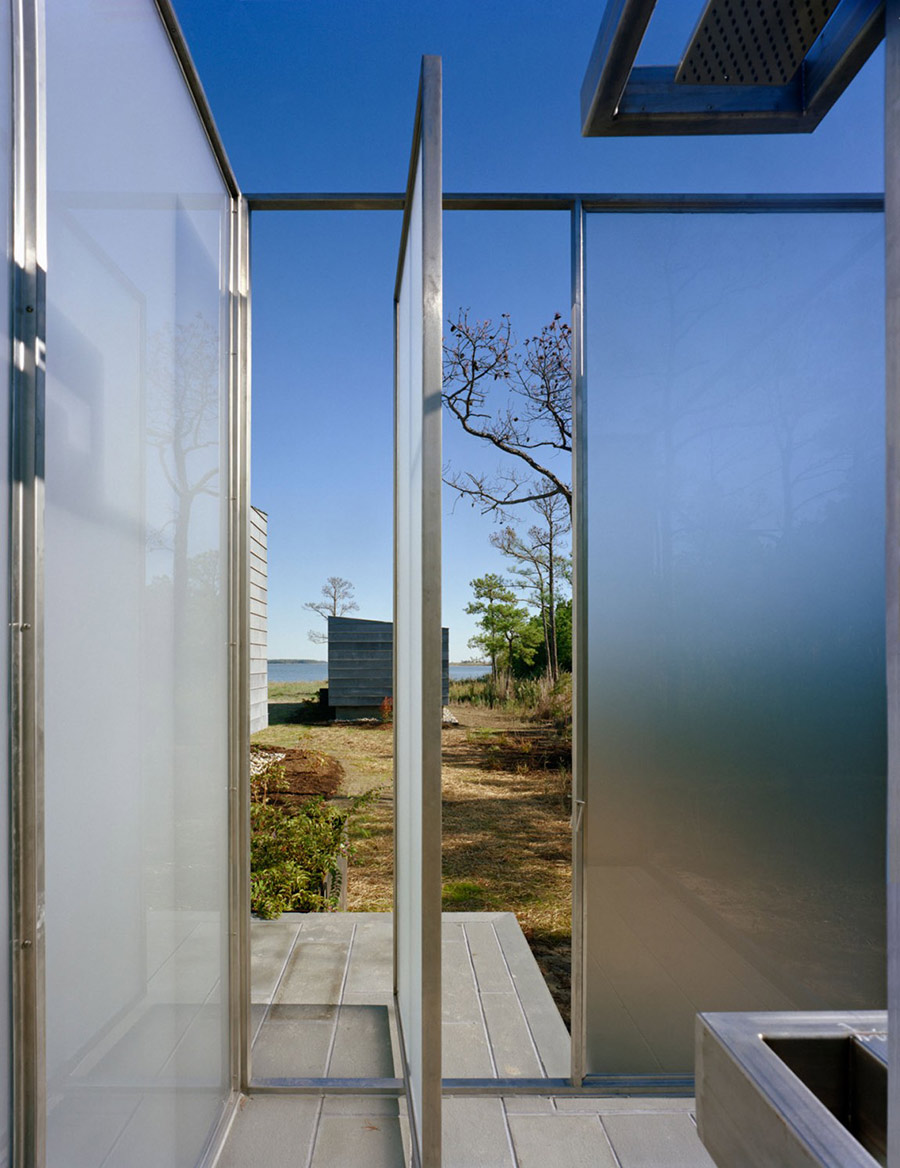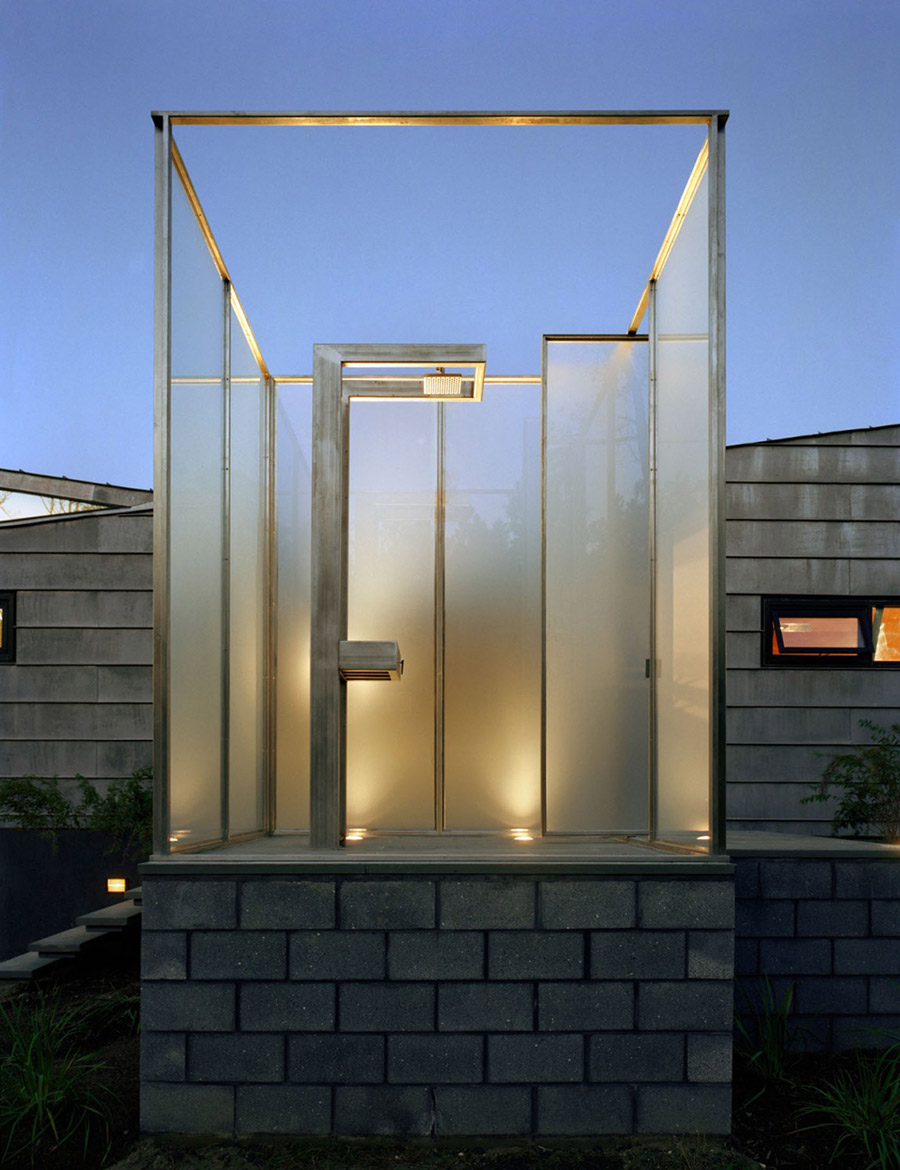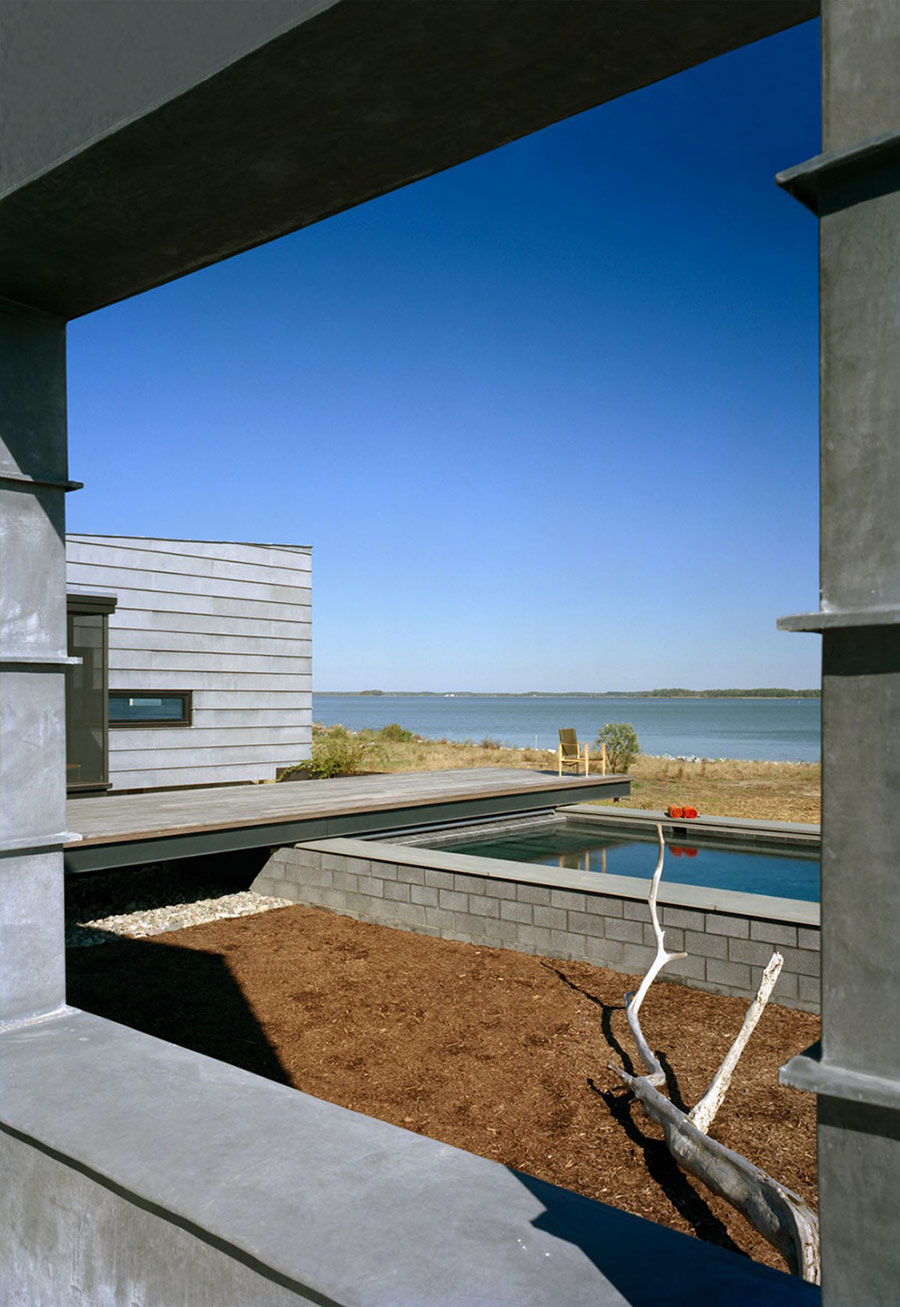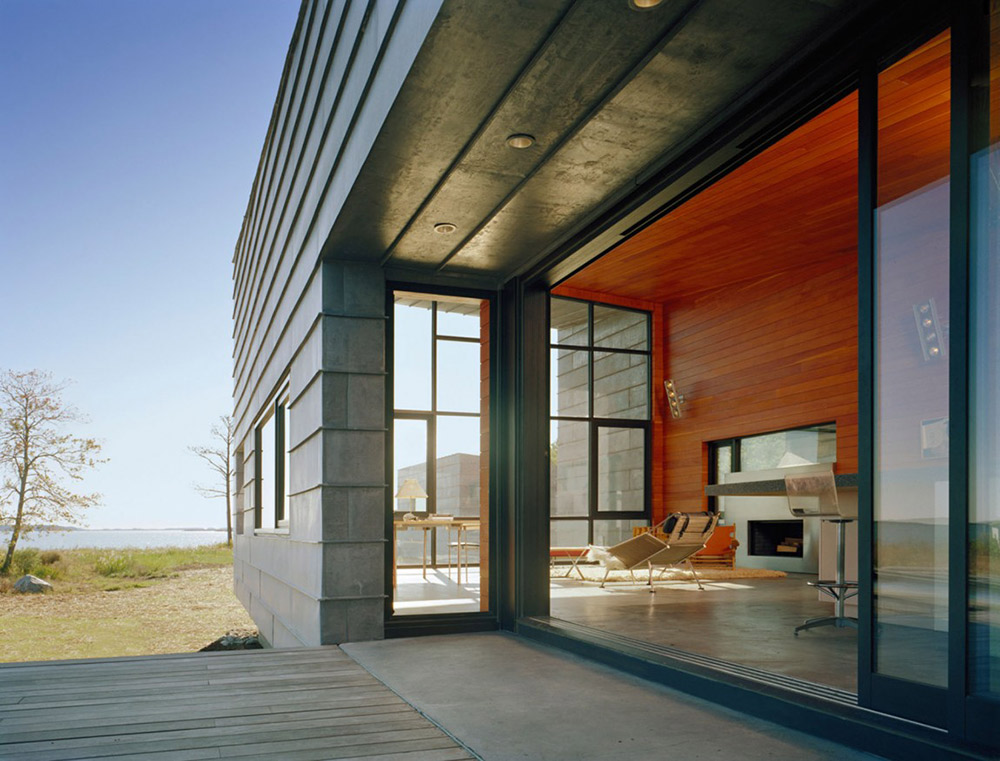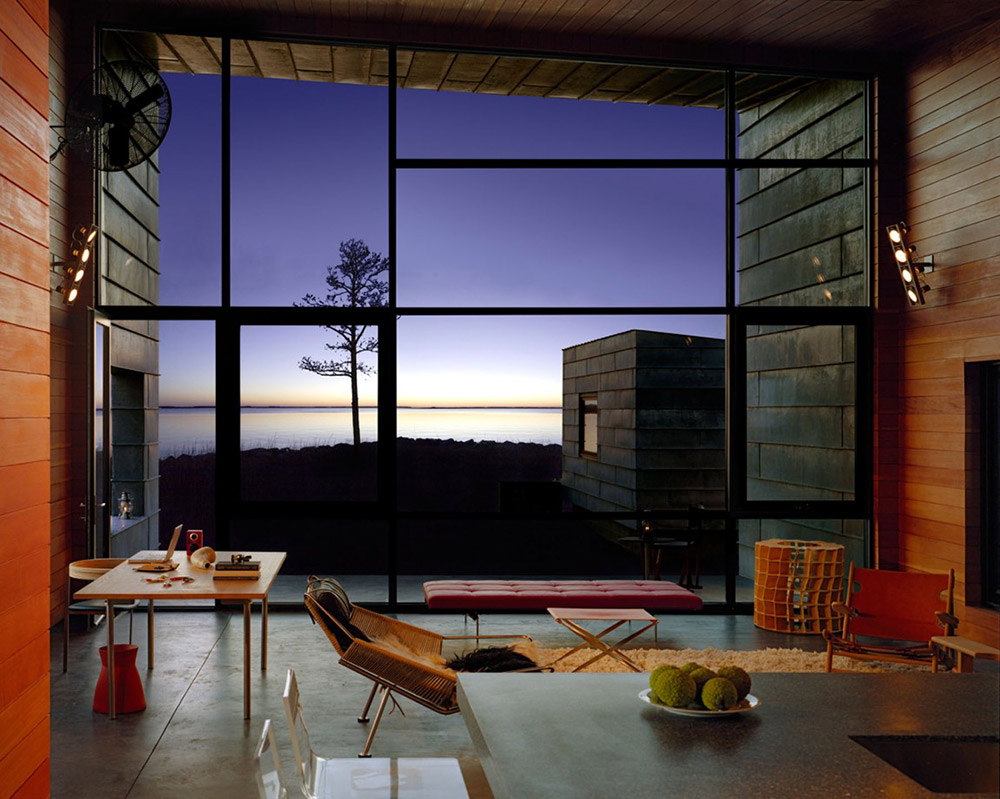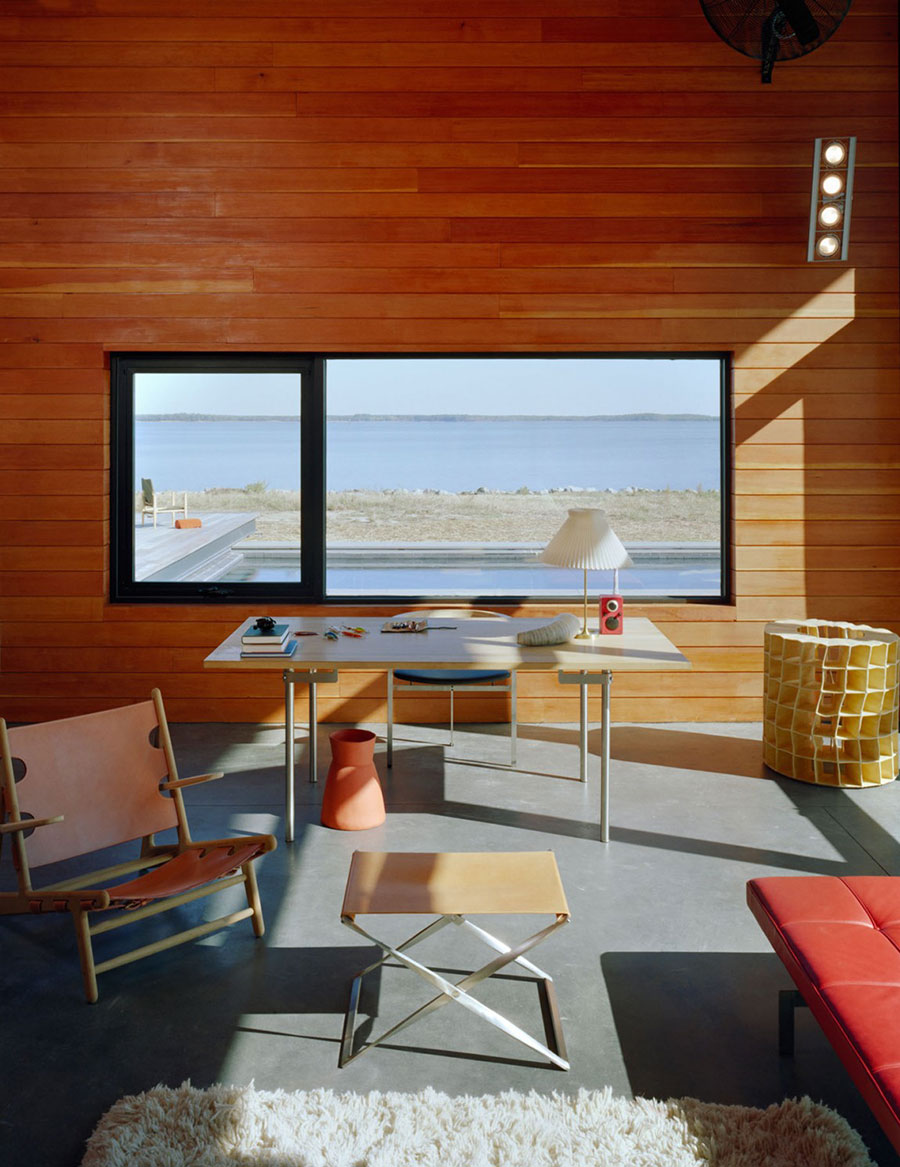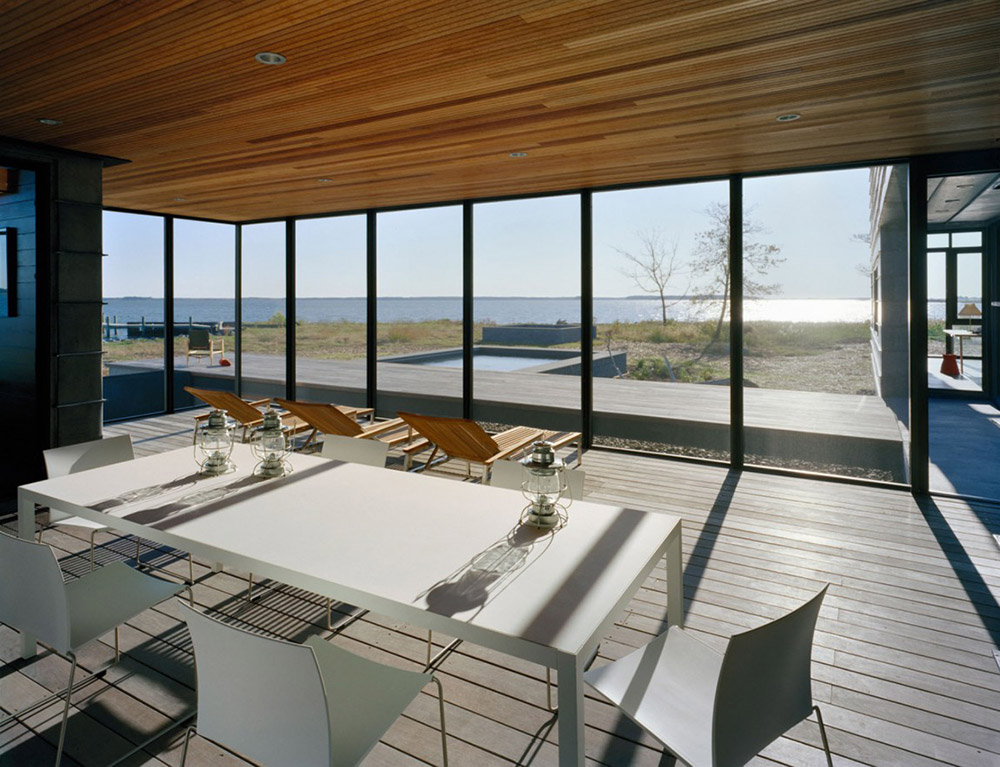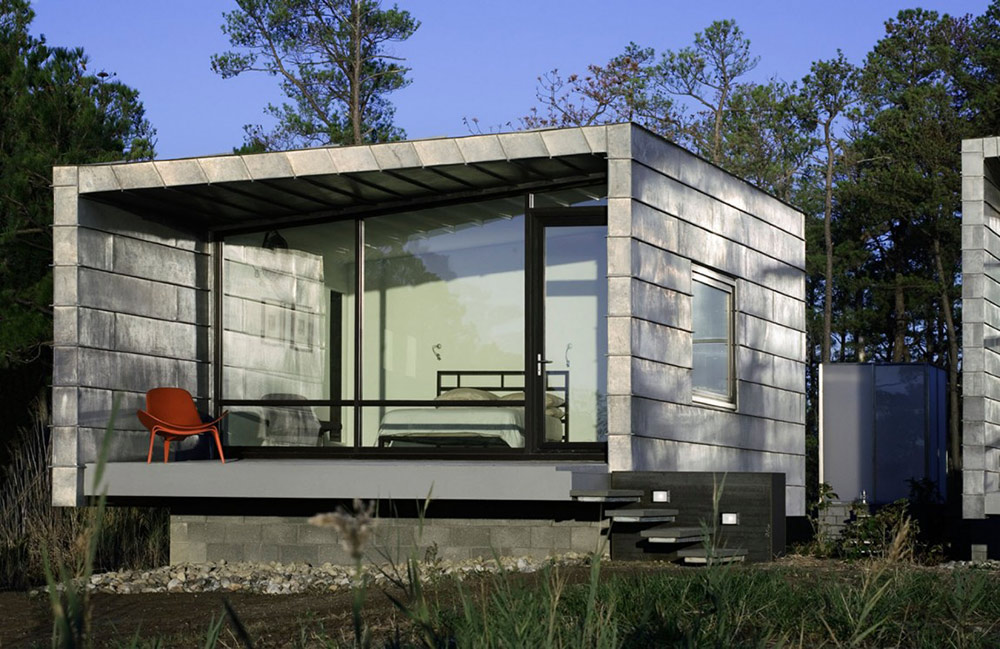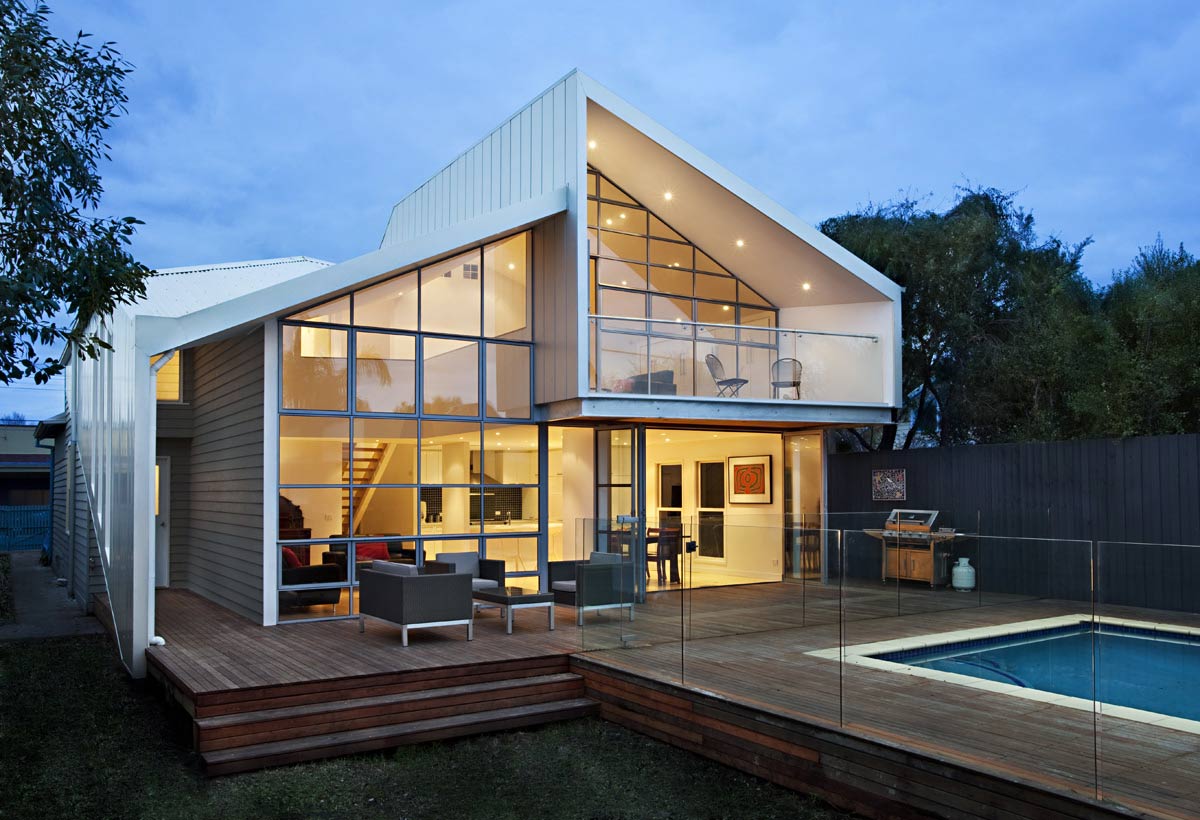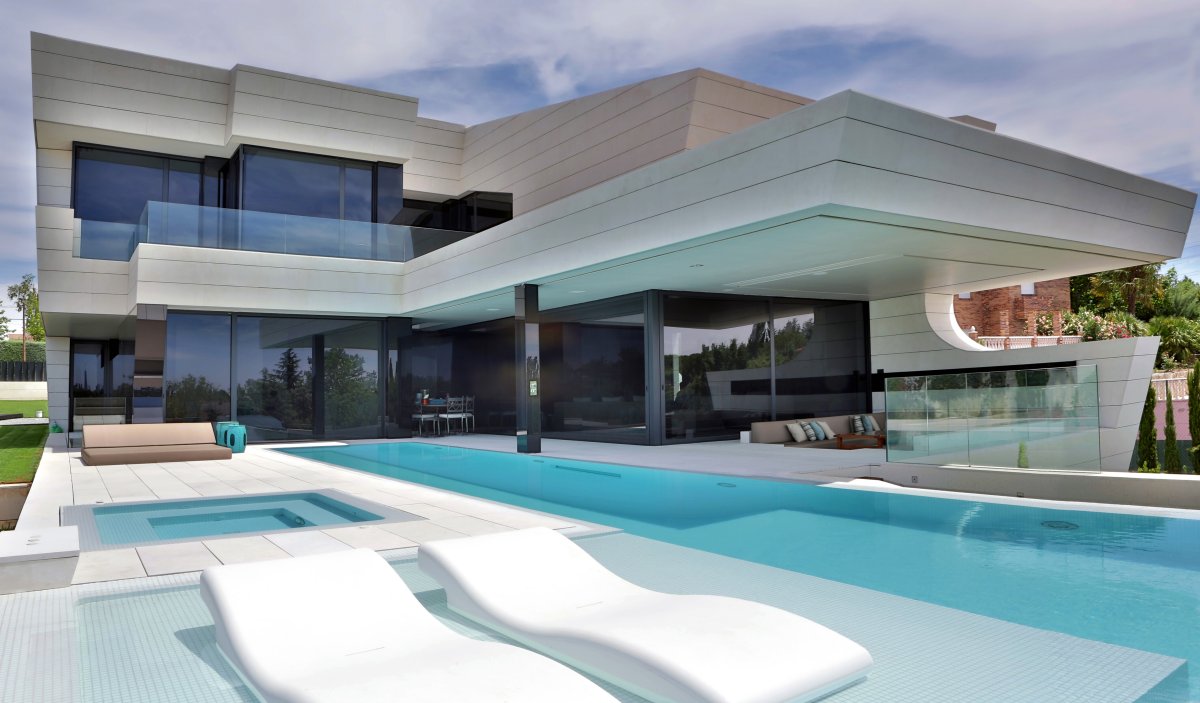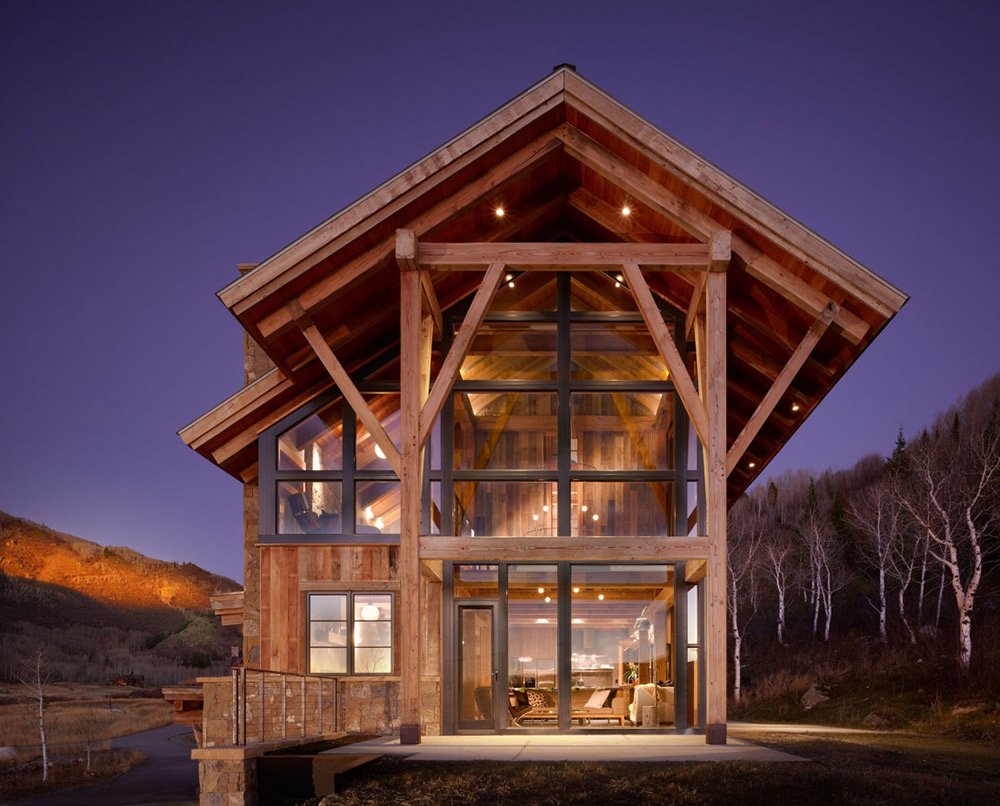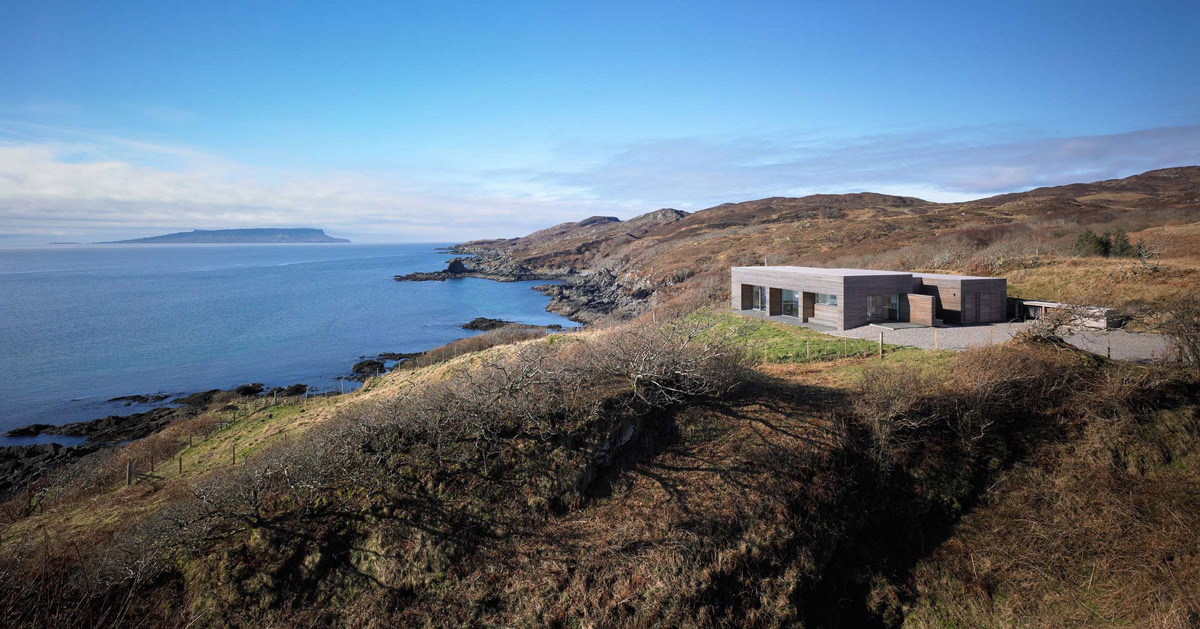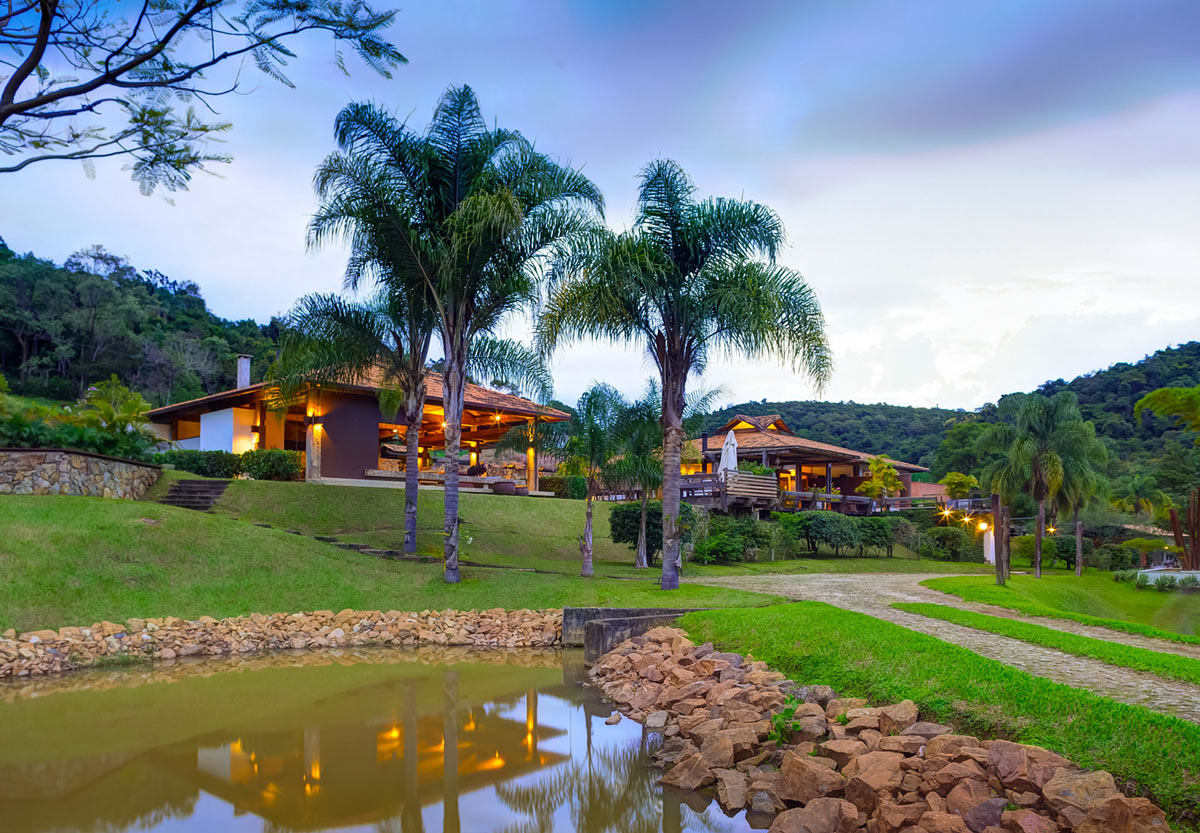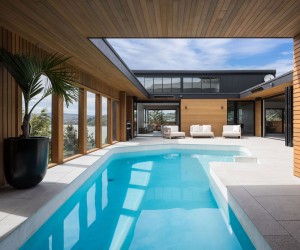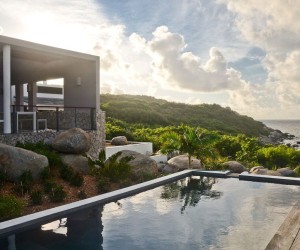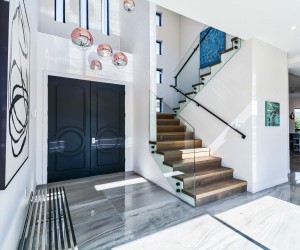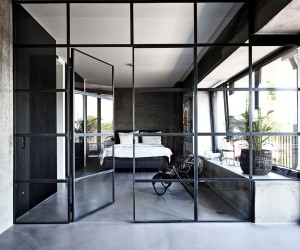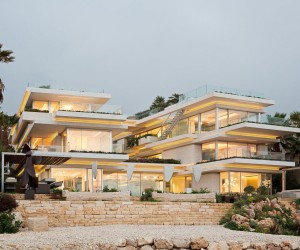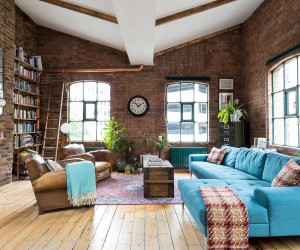Hoopers Island Residence, Maryland by David Jameson Architect
The Hoopers Island Residence was completed in 2007 by the Virginia based studio David Jameson Architect. This 2,200 square foot vacation home is located on a Chesapeake Bay Barrier Island near the Blackwater National Wildlife Refuge, Church Creek, Maryland, USA.
The Hoopers Island Residence consists of three separate structures, these include a master cabin, guest cabin, and lodge.
This vacation home has received several design awards, including the 2010 American Architecture Award.
Hoopers Island Residence by David Jameson Architect:
“The project conceptually fuses architectonic form with the natural elements of the site. Positioned between a salt meadow marsh, a pine forest, and the bay, the architecture is conceived to be at one with the water, the horizon, and the sky. The idea of an elemental architecture is explored in the relationship between the simple form of the building and the agrarian structures that dot the surrounding area.
Hooper’s Island occupies a land mass less than 1 meter above sea level. In 2003 a storm surge from Hurricane Isabel destroyed many of the houses on the island. As a result of the destruction, FEMA and the Dorchester County Zoning department established an ordinance requiring that all new residences be built three feet above the base flood elevation.
The local vernacular of the barns and fishing shacks which had survived the hurricane, provided inspiration for the new house which was elevated to the required height using plinths made of black ground face concrete masonry. The plinth foundations are tectonic constructs that result in an opportunity to create above-ground structures: the outdoor shower, the swimming pool and the fire pit.
The house is used with various degrees of frequency and intensity depending on the weather and the number of guests. For this reason, the house is composed of several separate cabins that can be locked down or conditioned and inhabited as needed. Although the cabins are individual buildings, they are linked visually by the exterior metal cladding and coplanar sloped roofs.
The three main structures that comprise the house are the master cabin, the guest cabin and the lodge. The master cabin and lodge are articulated as metal and wood tubes that cantilever off the plinths, minimizing the incision in the earth required for their footprints. Each building is oriented to take advantage of specific views across and down the Honga River. The guest cabin is located between the lodge and master cabin and has a roof that protrudes above the main roof to act as an abstracted light fixture, greeting visitors as they approach.
A screened porch is literally and figuratively a bridge that links the three volumes, while providing a breezy place to relax. A wood sun deck connects the pool plinth to the lodge. A fourth structure is an art studio.”
Comments
Source: ArchDaily


